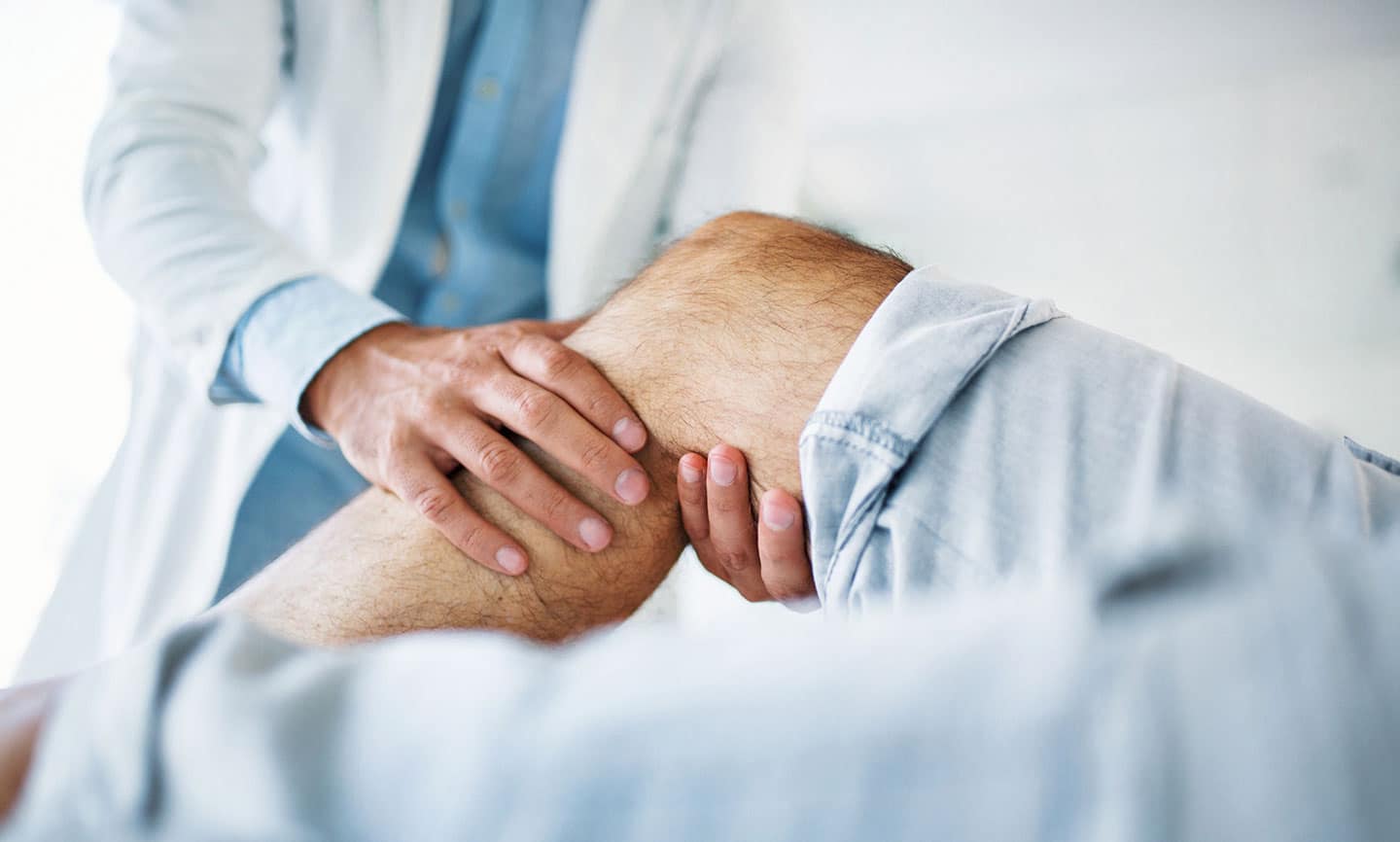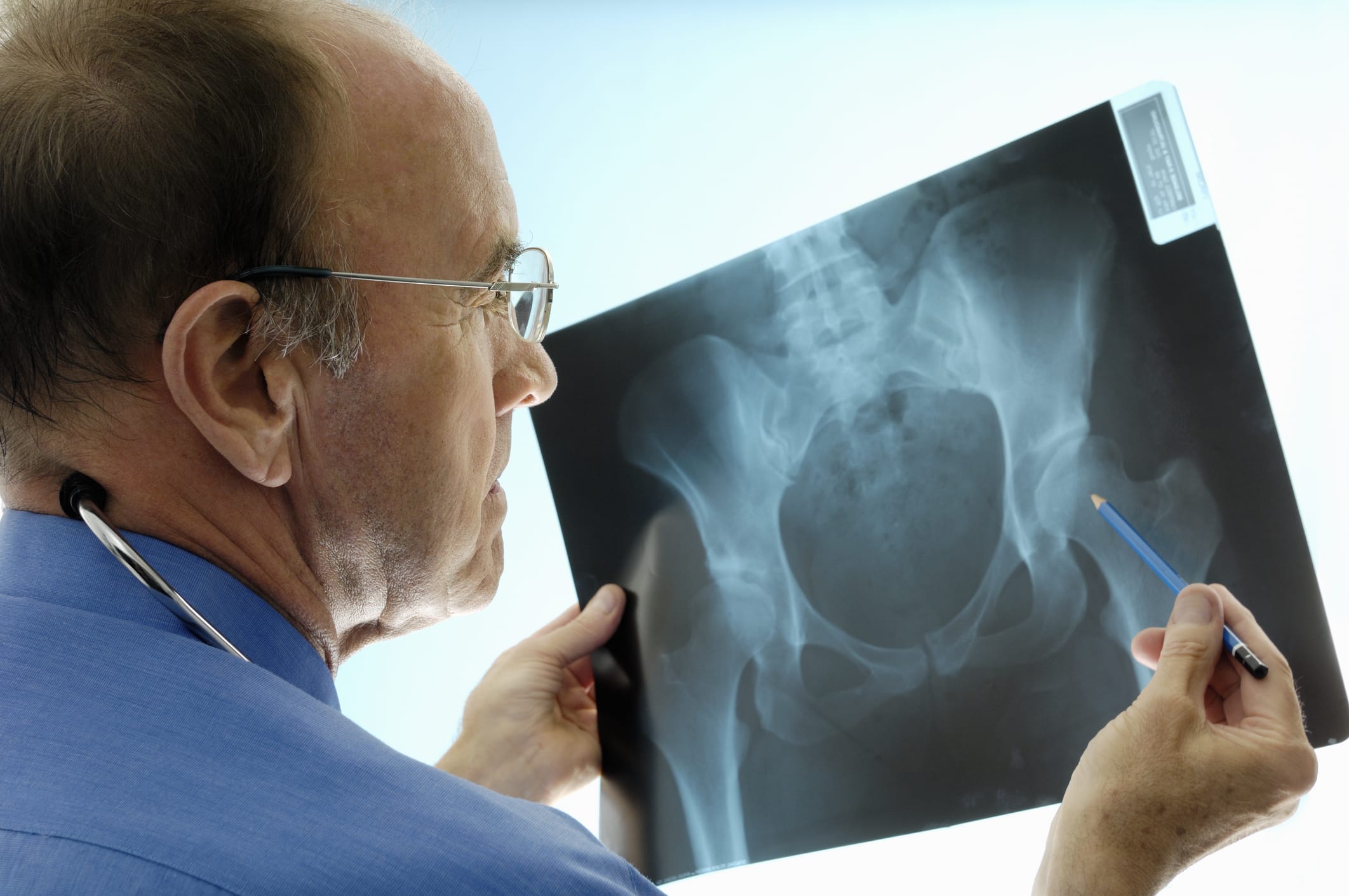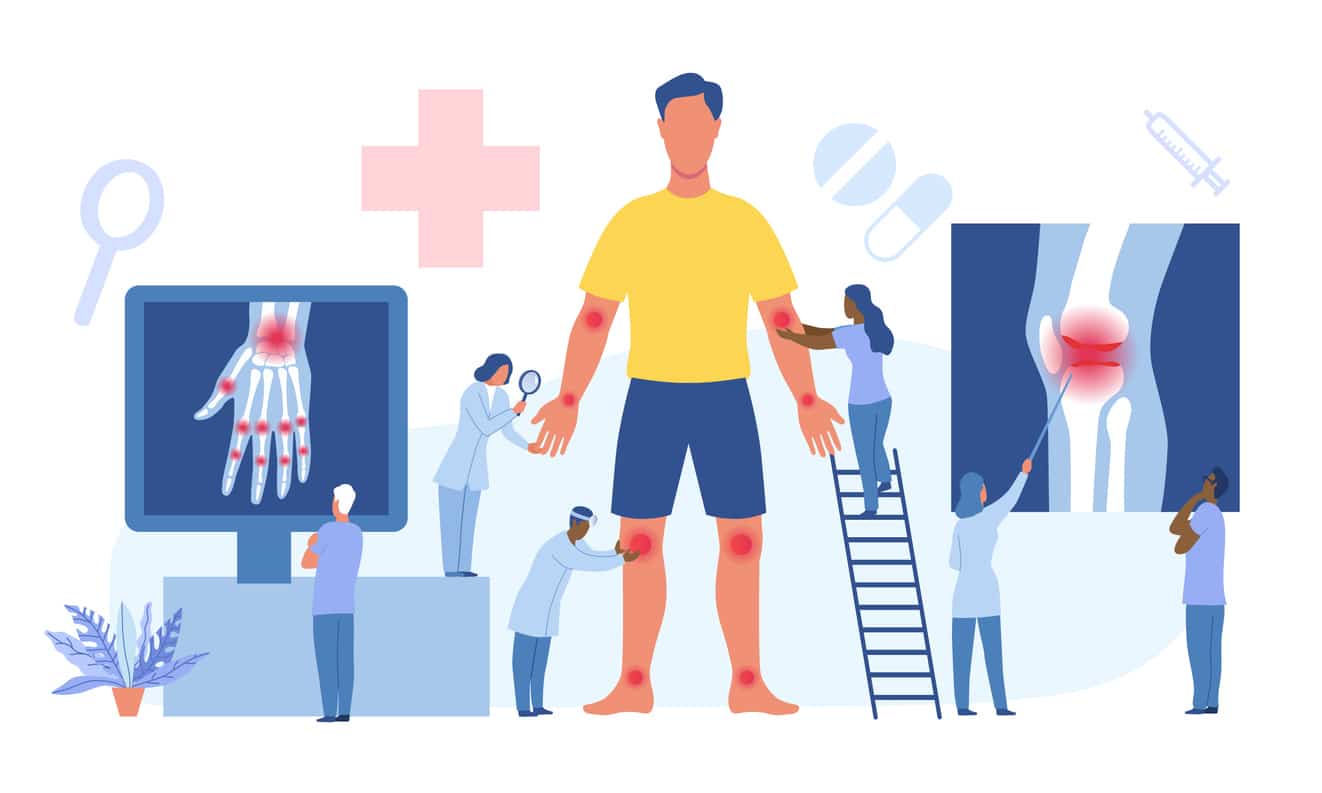Osteoarthritis Treatment
Osteoarthritis is a degenerative joint disease that affects the cartilage of joints. It is the most common form of arthritis and typically develops as people age. In osteoarthritis, the protective cushioning between bones gradually wears away with time, leading to pain and swelling in the affected joint. As a result, movement can become increasingly difficult, leading to stiffness and reduced mobility of the affected joint.
Common Symptoms of Osteoarthritis
The main symptom of osteoarthritis is a pain in the affected joint. This pain can be a dull, chronic ache that worsens with movement or pressure on the joint.
Other common symptoms of osteoarthritis include:
- Swelling and tenderness of the joint
- Stiffness and reduced range of motion
- Creaking or grating sensations when moving the joint
- Formation of bony spurs around the affected joint
- Inability to bear weight on the affected joint

How Can Osteoarthritis Be Diagnosed?
Osteoarthritis can be diagnosed through a combination of physical examination, X-ray imaging, and medical history. During a physical exam, your doctor may look for inflammation, tenderness, or swelling in the affected joint as well as decreased range of motion. X-rays can be used to detect the narrowing of joints and the presence of bony spurs. Lastly, your doctor may ask questions about any family history of osteoarthritis, past injuries to the joint, or other medical conditions that could increase the risk for osteoarthritis.

What are the Risk Factors for Osteoarthritis?
Age is the primary risk factor for osteoarthritis, as it typically develops in people over 50. However, there are other factors that can increase your risk of developing the condition.
Risk factors for osteoarthritis include:
- A family history of osteoarthritis
- Previous injuries to the joint
- Being overweight or obese
- Occupations with high physical demands
- Certain medical conditions such as psoriasis, diabetes, and lupus.
Medications
Orthopedic doctors may recommend over-the-counter medications such as ibuprofen or acetaminophen to reduce inflammation and pain. For more severe cases, a doctor may prescribe stronger medications such as corticosteroids or biologic agents.
Non-Steroidal Anti-Inflammatory Drugs (NSAIDs)
NSAIDs are typically the first line of treatment for pain due to osteoarthritis. These medications work by blocking certain hormones that cause swelling and inflammation in the body.
Common NSAIDs for osteoarthritis include:
- Ibuprofen
- Naproxen sodium
- Celecoxib
Injections
Orthopedic doctors may also prescribe injections, such as corticosteroid injections or viscosupplementation, for those with more severe cases of osteoarthritis. Corticosteroids are injected directly into the joint to reduce inflammation and provide relief for several weeks or months. Viscosupplementation involves injecting a lubricant-like fluid into the joint to improve joint movement and reduce pain symptoms.

Physical Therapy
Physical therapy is a treatment option used by orthopedic doctors to improve mobility and strengthen weakened muscles caused by osteoarthritis. The goal of physical therapy is to reduce pain and improve joint functionality.
Common physical therapy techniques include:
- Range-of-motion exercises
- Strength training
- Strengthening of the core muscles
- Stretching and flexibility exercises
Orthopedic Surgery
In some cases, orthopedic surgery may be necessary to treat osteoarthritis. Surgery may involve joint replacement, a fusion of the joints, or other techniques to reduce pain and improve mobility. These procedures are usually done in a hospital setting and require several weeks of recovery time.
Joint Replacement
The most common type of orthopedic surgery for osteoarthritis is joint replacement. This procedure involves replacing the arthritic joint with an artificial one, typically made of metal and plastic components. Joint replacement surgery can help relieve pain and improve mobility, allowing you to return to a more active lifestyle.

Fusion
Fusion of the joints may be performed if osteoarthritis has caused severe damage to a joint. During this procedure, two ends of a bone are fused together using either rods or screws. This makes it impossible for the joint to move and will prevent further wear and tear on the area. The goal of fusion is to reduce pain, improve stability and improve function in the affected area.
Other Surgical Options
In some cases, other techniques such as cartilage transplantation, microfracture and Osteochondral Autograft Transfer System (OATS) may be used to reduce pain and improve mobility in the affected joint. These techniques involve removing diseased or damaged tissue from one area of the body and transplanting it into another area to replace missing or damaged tissue.
Incorporating Osteoarthritis Remedies At Home
At Cameron Hospital, our experts can provide a range of non-surgical remedies to help manage the signs and symptoms of osteoarthritis at home. These may include exercise and lifestyle modifications, as well as nutritional counseling and medication management. By incorporating these methods into your daily routine, you may be able to find lasting relief from the discomfort caused by osteoarthritis.
Lifestyle Modifications
Lifestyle modifications can be an effective remedy for osteoarthritis pain. Activities such as walking, swimming, yoga, and tai chi can increase flexibility and range of motion in affected joints. Additionally, practicing proper posture and ergonomics (such as using a standing desk or taking regular breaks from sitting) can help reduce the strain on your joints.
Nutritional Counseling
Our doctors may also recommend nutritional changes to support a healthy lifestyle that’s beneficial for those with osteoarthritis. A diet rich in anti-inflammatory foods such as omega-3 fatty acids and fiber can help reduce inflammation in affected areas while providing essential vitamins and minerals needed for overall health.
When to See a Doctor for Osteoarthritis Treatment
If you are experiencing knee pain, stiffness, swelling, or reduced range of motion in any of your joints, it is important to contact the orthopedic team at Cameron Hospital for a professional evaluation. Our doctors can help diagnose and treat osteoarthritis to help you manage the condition and reduce its impact on your daily life.
It’s important to remember that diagnosing and treating osteoarthritis early is key to managing the condition successfully. If left untreated, osteoarthritis may worsen over time causing permanent joint damage and disability.
Orthopedic Osteoarthritis Treatment at Cameron Hospital
At Cameron Hospital, our orthopedic team is dedicated to providing comprehensive care for patients suffering from osteoarthritis. Our experienced providers will work with you to create a customized treatment plan tailored to your needs and lifestyle. Whether it’s medication, physical therapy, or surgery, we are committed to helping you achieve the best possible outcomes with the least amount of discomfort. Schedule an orthopedic appointment in Indiana today.

©2024 Cameron Memorial Community Hospital
416 E. Maumee Street, Angola, IN 46703
